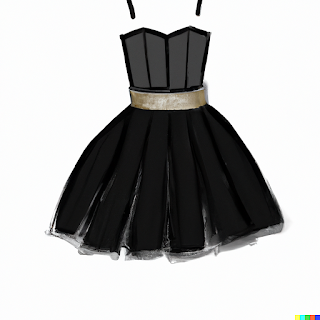Evolution of LBD
The little black dress is a timeless piece of clothing that has become a wardrobe staple for women all around the world. The LBD, as it is often referred to, has evolved over the years, from its origins as a practical garment to its status today as a fashion icon. In this article, we will explore the evolution of the little black dress, tracing its history from its inception to its current position as a fashion staple.
Origins of the Little Black Dress
The little black dress was born out of necessity. In the early 20th century, women's fashion was dominated by the corseted silhouette, which was often heavy, constrictive, and uncomfortable. However, the rise of the First World War and the subsequent need for practicality and functionality in fashion led to a shift in style. Women began to reject the corset and instead opted for looser, more comfortable clothing that allowed them to move freely.
It was during this time that the little black dress first appeared. The dress was originally designed as a simple, versatile garment that could be worn by women of all ages and for a variety of occasions. It was made from inexpensive materials such as cotton, silk, or rayon, and was often unadorned, with minimal detailing.
The first little black dress to gain widespread popularity was created by the designer Coco Chanel in the 1920s. Chanel was a pioneer in women's fashion and was known for her minimalist designs, which emphasized comfort and functionality. Her little black dress, which was made from a lightweight jersey fabric and featured a simple, straight silhouette, quickly became a hit among women who were looking for a chic and practical alternative to the traditional corseted styles of the past.
The little black dress became even more popular during the Great Depression of the 1930s. With money tight and resources scarce, women turned to practical, affordable clothing that could be worn for multiple occasions. The little black dress, with its simple design and versatility, became a go-to option for many women during this time.
Evolution of the Little Black Dress in the 1950s and 1960s
The 1950s and 1960s saw a significant shift in fashion, with designers embracing a more feminine, glamorous aesthetic. The little black dress was no exception and began to evolve into a more sophisticated and elegant garment.
In the 1950s, the little black dress was often paired with statement accessories such as pearls, gloves, and hats, which added a touch of glamour and sophistication to the look. The dress itself became more structured, with fitted bodices and flared skirts that accentuated the waist and hips.
One of the most famous little black dresses of all time was worn by Audrey Hepburn in the 1961 film, "Breakfast at Tiffany's." The dress, designed by Hubert de Givenchy, was a sleeveless, floor-length gown that featured a fitted bodice, a full skirt, and a deep V-neckline. The dress became an instant classic and is still considered one of the most iconic little black dresses in history.
The 1960s saw the little black dress continue to evolve, with designers experimenting with new shapes and fabrics. Shift dresses, which featured a simple, boxy silhouette, became popular during this time. These dresses were often made from lightweight materials such as silk or chiffon, which gave them a flowy, ethereal quality.
The Little Black Dress in the 1970s and 1980s
The 1970s saw a return to more casual, bohemian styles, and the little black dress evolved to reflect this. Dresses were often made from softer, more comfortable fabrics such as cotton or linen and featured looser, more relaxed silhouettes















0 Comments